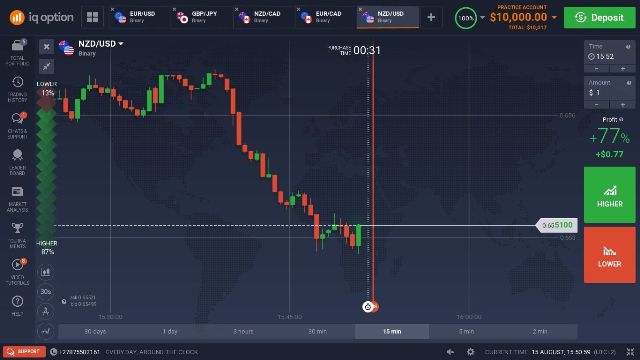Contents
The type of statistics used to analyze data is inferential statistics. It is used to draw conclusions and make generalizations about the population data by analyzing the sample data. Continuous data – Such a type of data can be divided into finer levels and can take on any numeric value. There are two types of continuous data, namely, interval and ratio data. Interval data can be negative and does not have a meaningful zero.

Examples of accessible software able to complex statistical computation include programs corresponding to Mathematica, SAS, SPSS, and R. A typical statistics course covers descriptive statistics, chance, binomial and normal distributions, take a look at of hypotheses and confidence intervals, linear regression, and correlation. Using the sample of these 50 products, we can make inferences about the entire population of 1000 products. So, the average product defective rate is a statistical central tendency measure . The part to infer for all the 1000 products based on the sample of 50 products that are to generalize using the sample is Inferential Statistics.
Simple linear, multiple linear, nominal, logistic, and ordinal regression are the types of regression analysis. Hypothesis testing – It is used to test some assumptions and make inferences about the population parameters by using an estimate of the sample. There are many types of statistical tests used for this purpose. It is often carried out using measures of central tendencies, measures of dispersion, correlation, regression, and interpolation. The standard deviation is the measure of the amount of variation of a set of values. So you would simply have to make do with a sample of Indian voters.
What are the Measures of the Types of Statistics?
For instance, a bar graph can be used to represent the monthly sales of the shop for watermelons and coconuts. It can show which item performs better and how these items perform over the months. Descriptive vs inferential statistics is an age-old debate because while descriptive statistics gives more accurate results, inferential statistics can be applied to larger datasets. It relies upon how deep one goes into the topic, I mean we had been reviewing some classical speculation testing at the graduate degree with probability concept involved and that went method over my head . To perceive the statistics from a holistic viewpoint, every student ought to understand the two broad https://1investing.in/. However, it is essential to grasp the whole concept of statistical analysis so that you can really feel the beauty of it.
Today’s mathematicians would probably agree that the Riemann Hypothesis is the most significant open problem in all of math. It’s one of the seven Millennium Prize Problems, with $1 million reward for its solution. It has implications deep into various branches of math, but it’s also simple enough that we can explain the basic idea right here. Inferential statistics used to make inference and describe about the population. These stats are more useful when its not easy or possible to examine each member of the population. The possibility of error in the statistical language is known as the margin of error.

This process of checking for samples being a true representation of the population is obtained by sampling. When it comes to descriptive vs inferential statistics, the analysis is limited to the available data in descriptive statistics. In inferential research, the analysis goes beyond the available data. Values closer to -1 or +1 indicate a strong linear relationship and values closer to zero indicate weaker relationships. Scatter plots are used to visually show the relationship between two numerical variables. Covariance, as a descriptive measure, measures the strength of the linear relationship between two numerical variables.
We can only make predictions to check this accuracy and when we predict anything, what result do we get? A low variance implies the values in the data are closer to the mean and a higher variance indicates the data is spread out from the mean. With an even number of observations, the median is the average of the two middle values. Qualitative data or categorical data – nominal and ordinal data. Inferential Statistics are intended to test hypotheses and investigate relationships between variables and can be used to make population predictions.
(ii) Measures Of Central Tendency
The Median of the Data points to the left of this Median is said to be the upper quartile and the Median of the Data points to the right of this Median is said to be the lower quartile. One of them is random sampling, which means that every item in the population data should have an equal chance of being selected in the sample. And that the selection of one branches of statistics item shouldn’t affect the selection of another. Here are some examples that will help clarify the inferential statistics definition. Say you have been asked by the Election Commission to find out if Indian voters are satisfied with voting procedures for Lok Sabha elections. Here’s an example that will help clarify the descriptive statistics definition.
- A lower standard deviation implies that the values are not spread and are close to the average of the dataset.
- The set of primary statistical skills that individuals need to take care of info in their everyday lives correctly is referred to as statistical literacy.
- Percentile Ranks, Quartile Ranks show relation of the responses to one another.
- This article briefly covers the ground zero and aims at removing the fear of the unknown.
For example, rating a restaurant experience on a scale of 1 – 5. Before the various tools used in the different types of statistics can be deployed, it is necessary to also understand the types of data. The upcoming section will elaborate on the types of data and variables used in statistics. Descriptive statistics is a set of temporary descriptive coefficients that summarize a given data set representative of a whole or sample population.
How Many Types of Variables in Statistics are Used?
Statistics are defined as numerical data, and is the field of math that deals with the collection, tabulation and interpretation of numerical data. An example of statistics is a report of numbers saying how many followers of each religion there are in a particular country. Representative sampling assures that inferences and conclusions can safely extend from the sample to the inhabitants as an entire. A main drawback lies in determining the extent that the pattern chosen is definitely representative. Statistics presents methods to estimate and correct for any bias throughout the pattern and knowledge collection procedures. Populations could be various groups of individuals or objects such as “all folks dwelling in a country” or “each atom composing a crystal”.
As there are two types of data thus, there are two types of variables in statistics . There are two types of statistics – descriptive and inferential statistics. There are two types of data in statistics, namely, qualitative data and quantitative data.
Exploratory data evaluation is an strategy to analyzing information units to summarize their major traits, typically with visible strategies. A statistical model can be utilized or not, but primarily EDA is for seeing what the data can tell us past the formal modeling or speculation testing activity. The latter gives equal weight to small and big errors, while the former offers more weight to massive errors. Residual sum of squares is also differentiable, which supplies a handy property for doing regression. Modern elementary statistical courses for undergraduate college students give attention to the proper take a look at selection, outcomes interpretation and use of open supply softwares .
The mathematical foundations of modern statistics were laid in the seventeenth century with the development of the chance principle by Gerolamo Cardano, Blaise Pascal and Pierre de Fermat. Mathematical chance theory arose from the research of video games of probability, though the idea of likelihood was already examined in medieval law and by philosophers such as Juan Caramuel. Statistics are the sets of mathematical equations that we used to analyze the things. It keeps us informed about, what is happening in the world around us. They use their statistical skills to collect the relevant data.

If there is a sampling error, then that means to some extent the sample is not accurately representing the population. Statistics is a branch of math that deals with the collection, analysis, interpretation, and presentation ofdata. Types of statistics refer to the branches of statistics used to collect, describe, and draw conclusions from data. Discrete variables – Discrete variables represent the counts of unique items or values. The different types of flowers in a garden can be represented using discrete variables. Discrete data – This is one of the types of data that can only involve the use of integers and cannot be divided into smaller or finer parts.
It is used to estimate how the variables are related, that is it mathematically shows how one variable changes with respect to another variable. Variance is the averaged square deviations from each observation to the mean. Variance of data is calculated by dividing the sum of the squares of each data point’s differences from the data’s average by the total number of values in the data.
( Regression Analysis
In the descriptive Statistics, the Data is described in a summarized way. The summarization is done from the sample of the population using different parameters like Mean or standard deviation. Descriptive Statistics are a way of using charts, graphs, and summary measures to organize, represent, and explain a set of Data.
The standard method is to test a null speculation in opposition to another speculation. The various types of statistics are required for the collection, description, organization, analysis, and interpretation of data. These types of statistics help to describe certain attributes related to the data as well as estimate the parameters of the population by analyzing samples. The debate about descriptive vs inferential statistics takes away from crafting a more holistic approach. While descriptive statistics are used to present raw data in an accurate way, inferential statistics are used to apply inferences derived from a data sample to the larger data population.
For instance, where the population data is limited, descriptive statistics is the right approach because it guarantees accuracy. However, when solving complex problems that affect a huge population, this method won’t work. Using inferential statistics to extrapolate the results for a larger population is the way to go in this case. Therefore, differences observed could be due to different treatments or they may be attributable to chance, measurement error, or other characteristics of the individual subjects. It is the study of the collection, analysis, interpretation, presentation, and organization of data. It studies the methods of collection, tabulation, summarizing and drawing conclusions from data to make informed choices.
School districts employ statistics to project what number of lecture rooms they will want for seventh graders in 2019. School psychologists and nurses use statistics to ask for the assets they will need to help children, whereas voters contemplate data whereas determining their school district’s annual budget. At each stage somebody is crunching numbers and utilizing data to guide their decision-making. If each business owner had a handle on primary statistics, a number of awesome TV exhibits wouldn’t exist.

